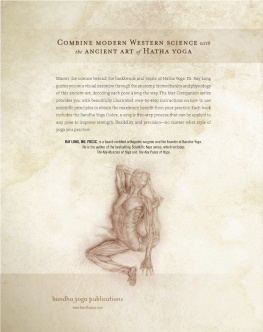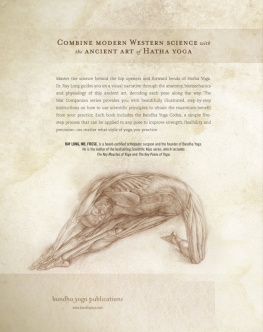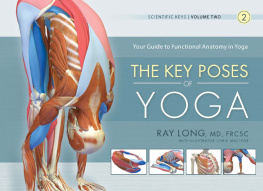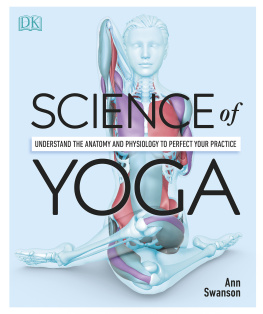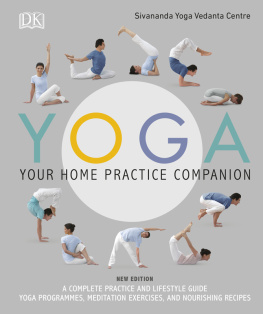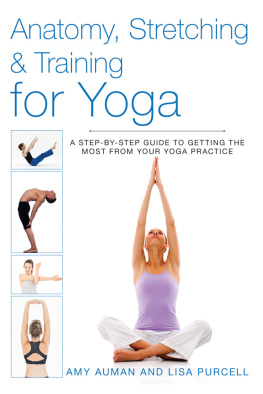
bandha yoga publications
This book is intended as a reference volume only, not as a medical manual. It is not to be used in any manner for diagnosis or treatment of medical or surgical conditions. This book is also not intended to be a substitute for any treatment that may be or has been prescribed by your health care provider. If you suspect that you have a medical problem, consult your physician. Always, in your particular case, obtain medical clearance from your physician before beginning the practice of yoga or any other exercise program. Always practice yoga under the direct guidance and supervision of a qualified and experienced instructor. Working directly with a qualified yoga instructor can help to prevent injuries. The author, illustrators, editor, publisher and distributor specifically disclaim any responsibility or liability for injuries that may occur during the practice of yoga or any other exercise program.
Published by Bandha Yoga Publications
Plattsburgh, NY
www.bandhayoga.com
Copyright 2010 Raymond A. Long, MD, FRCSC
All content, visual and textual, produced under the direction of Ray A. Long, MD, FRCSC
All rights reserved.
No part of this book may be reproduced, stored in a retrieval system, or transmitted by any means, electronic, mechanical, photocopying, recording, or otherwise, without written permission from the publisher.
Mat Companion is a registered trademark.
Distributed by Greenleaf Book Group LLC
For ordering information and bulk purchases, contact Bandha Yoga Publications.
Phone: 518.578.3720
Design and composition by Greenleaf Book Group LLC
Cover design by Greenleaf Book Group LLC
Front and back cover illustrations by Kurt Long, BFA www.kurtlong.net
Computer Graphics Technical Director: Chris Macivor
Sanskrit calligraphy and border painting: Stewart Thomas www.palmstone.com
Editor: Eryn Kirkwood, MA, RYT www.barrhavenyoga.com
ISBN 13: 978-1-60743-944-8
Part of the Tree Neutral program, which offsets the number of trees consumed in the production and printing of this book by taking proactive steps, such as planting trees in direct proportion to the number of trees used: www.treeneutral.com

10 11 12 13 14 15 10 9 8 7 6 5 4 3 2 1
First Edition
CONTENTS
INTRODUCTION
Practicing yoga is not necessarily the path of least resistance and although the Sanskrit word asana translates to mean a comfortable, easy position, most yoga poses are neither comfortable nor easy. Working with them, however, makes daily life more comfortable and easy.
So why integrate Western science into the ancient art of Hatha Yoga? Because scientific techniques enable you to intelligently design your practice and give you confidence in your teaching. Hatha Yoga works with the body and Western science understands how the body works.
For example, suppose you want to deepen a backbend such as Urdhva Dhanurasana. Knowledge of anatomy, biomechanics, and physiology enable you to predictably do this. Or if youre a teacher and a student comes to you with lower back discomfort in Camel Pose, you can use the abdominal air bag effect discussed in this book and often address the problem quickly and easily. Similarly, if you wish to deepen twists for yourself or your students, design your practice to involve physiological techniques such as facilitated stretching that will release and lengthen the muscles that inhibit turning the trunk. Many of these solutions would not be obvious, or would even be counterintuitive, unless you knew how to apply scientific principles to yoga. This book explains these techniques in detail, with their practical application for backbends and twists.
Spare no effort in searching out areas of resistance in your yoga poses. If your body is stiff, use the physiological techniques described in the Mat Companion series to lengthen muscles, break through barriers, and gain flexibility. If your body is flexible, then work with the bandhas described here to increase your strength.
Painter and sculptor George Braque once said, Art disturbs, science reassures. The idea is that art takes one out of a comfort zone and into new experiences. Science provides grounding and stability. Yoga poses are like physical sculptures that take you out of your comfort zone. Scientific techniques are the sculpting tools that allow you to do this with intelligence and precision.
HOW TO USE THIS BOOK
Practicing yoga is like passing through a series of doors, with each door revealing new possibilities in the poses. The key to unlocking the first door is understanding the joint positions. This understanding can be used to identify the muscles that create the form of the pose and those that stretch. The key to positioning the joints is engaging the correct muscles. This begins with the prime movers. Engage the prime movers and the bones will align. The key to deepening the asanas is using your understanding of physiology to lengthen the muscles that stretch in the pose. Focus on these keys and the postures will automatically fall into place and manifest the beneficial effects of yoga. These include improved flexibility, heightened awareness, a sense of well-being, and deep relaxation.
The Mat Companion series is a set of modular books. Each book focuses on a specific pose category and contains the following:
The Key Concepts: a description of biomechanical and physiological principles with applications for specific poses.
The Bandha Yoga Codex: a simple five-step process that can be used to improve your flexibility, strength, and precision in the asanas.
The Pose Section: a detailed description of the individual postures.
Movement Index: explanations of body movement and tables listing the muscles associated with each movement.
Anatomy Index: a visual listing of bones, ligaments, and muscles (showing the origins, insertions, and actions of each).
Glossary of Terms
Sanskrit Pronunciation and Pose Index
English Pose Index

FIGURE 1 The Key Concepts show you how to apply biomechanics and physiology to your poses. Read this section first and return here often to refresh your knowledge.

FIGURE 2 The opening page for each pose illustrates the basic joint actions and positions of the body for that particular asana. Sanskrit and English names are provided for each posture. Use this page to assist you in learning the basic form of the pose and other concise details.
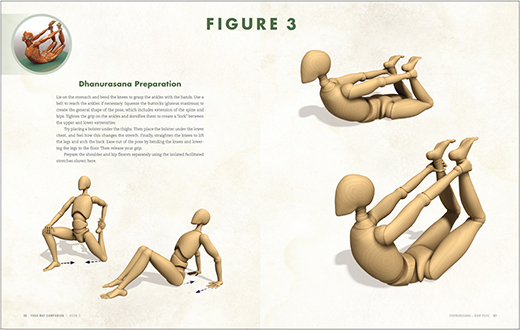
FIGURE 3 Use the preparatory section as a guide for how to enter the pose. If you are new to yoga or feel a bit stiff, use one of these modifications for your practice. In general, the preparatory poses affect the same muscle groups as the final asana. You will benefit from the pose no matter which variation you practice.
Next page
